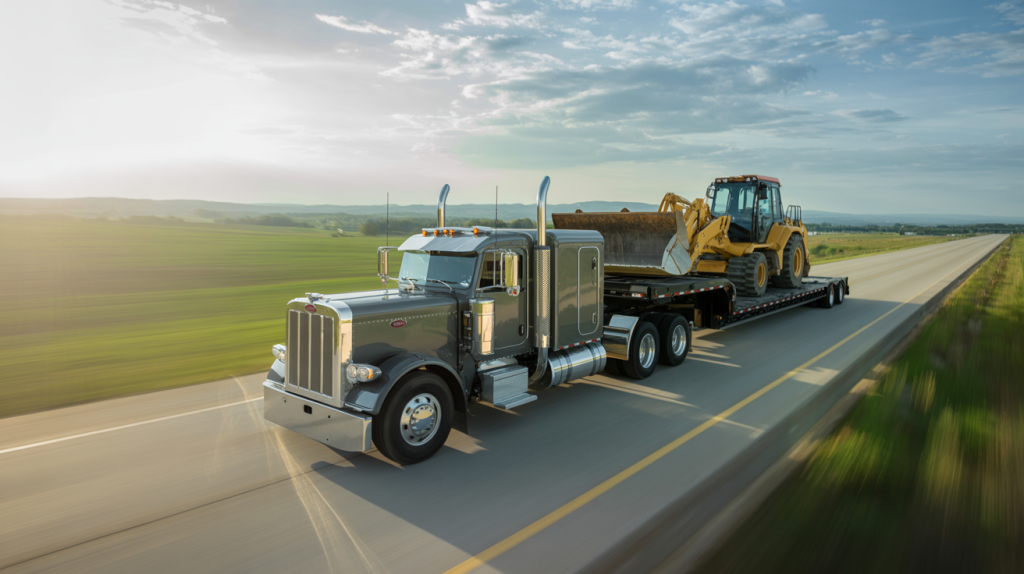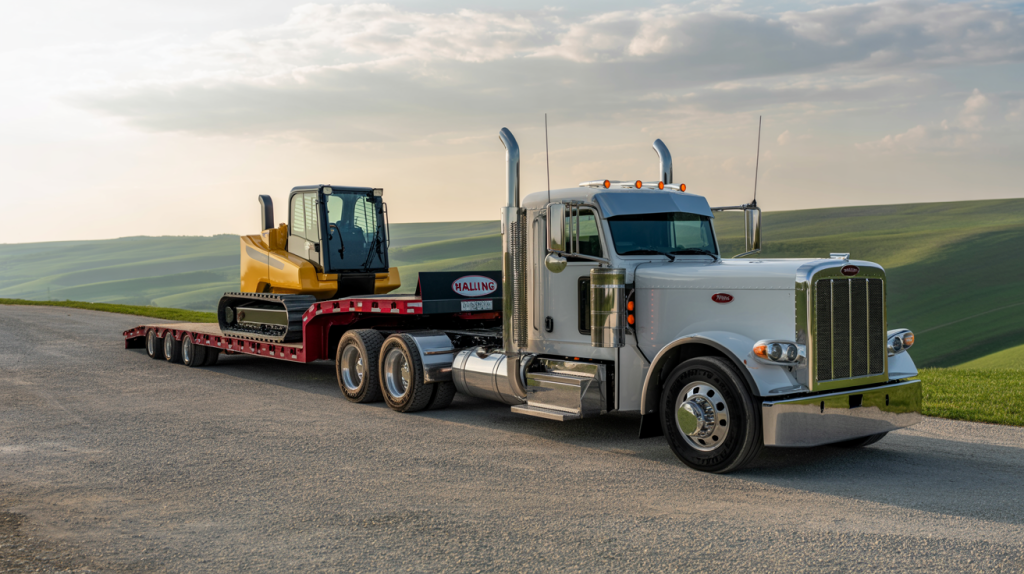How to Manage and Avoid Heavy Haul Trucking Challenges in Ohio
Freedom Heavy Haul can offer expedited Pickup and Delivery for any size shipment anywhere in the USA. Contact us today for No Hassle, No Pressure Pricing.
You manage and avoid Ohio’s heavy haul challenges by securing permits early, choosing safe routes, using the right equipment, and staying ahead of weather and compliance issues.
In this article, you will learn about How to Manage and Avoid Heavy Haul Trucking Challenges in Ohio.
Early Permit Planning
Proper permits keep your move legal and on schedule.
Identify Your Permit Type
- We at Freedom Heavy Haul recommend choosing the right permit—a single-trip permit if you have only one oversize or overweight move, an annual permit when you regularly haul similar loads, or a superload permit for exceptionally heavy or large shipments.
- Single-trip permit: Ideal for one-off shipments that exceed Ohio’s standard limits but don’t qualify as superloads.
- Annual permit: A cost-effective option if you plan multiple heavy hauls under the same weight and dimension thresholds throughout the year.
- Superload permit: Required for any load over 120,000 lbs gross or with dimensions well beyond 8 ft 6 in wide, 13 ft 6 in tall, or 53 ft long; involves extra scrutiny and route analysis.

Submit Applications Early
- Begin the permit application process at least 2–4 weeks before your planned move to allow ample time for reviews, especially for superloads.
- Coordinate with all relevant agencies—Ohio DOT, county engineers, and utility providers—to confirm route feasibility and avoid last-minute reroutes.
Smart Route Selection
Avoid infrastructure pitfalls and unexpected detours.
Use Specialized Routing Software
- We employ OS/OW GPS tools that automatically route you around bridges or roads with weight restrictions, ensuring you don’t encounter sudden “road closed” notices mid-trip.
- Keep your mapping database current by regularly updating for construction zones, seasonal weight limits, and new local ordinances.
Plan for Urban and Rural Constraints
- In cities such as Columbus and Toledo, identify and avoid tight intersections, low-clearance overpasses, and areas with frequent roadwork that could trap wide loads.
- On rural roads, look out for soft or unpaved shoulders that can’t support heavy axles, steep grades that challenge braking systems, and bridges with low load capacities.
Choosing the Right Equipment
The correct trailer and securement gear protect your load—and Ohio’s roads.
Select an Appropriate Trailer
- Lowboy trailers sit lower to the ground, offering extra vertical clearance for tall equipment—perfect for transformers and large machinery.
- Multi-axle modular trailers spread the weight over more axles, reducing per-axle load and helping avoid pavement damage on weaker roads.
- Stretch flatbeds are adjustable in length and can accommodate unusually long items like beams or pipe sections.

Meet Securement Standards
- Use FMCSA-approved chains, straps, and binders sized appropriately for your load’s weight to prevent shifting during transport.
- Equip your rig with high-visibility flags, lights, and “Oversize Load” signage in line with Ohio’s marking regulations to alert other drivers well in advance.
Weather and Seasonal Preparedness
Staying ahead of Ohio’s climate reduces downtime.
Winter Hauling Precautions
- Plan for reduced speed limits due to snow and ice, and consider adding winter tires or chains to improve traction.
- Monitor forecasts for blizzards or white-out conditions, and build extra buffer time into your delivery schedule.
Spring Thaw and Rain Risks
- Observe temporary weight restrictions imposed during thaw season, which can limit axle loads on vulnerable pavements.
- Identify alternate higher-ground routes to bypass flooded low-lying roads during heavy rains.
Safety Compliance and Coordination
Compliance safeguards your cargo and the public.
Pre-Trip and On-Road Inspections
- Conduct a comprehensive pre-trip inspection of securement points, tires, brakes, and lighting before departing—document everything.
- Maintain scheduled check-ins via phone or live-tracking so any load shifts or equipment issues are flagged before they become emergencies.

Work with Authorities and Escorts
- Coordinate with state police and local agencies to arrange law-enforcement escorts for superloads or particularly challenging routes.
- Deploy pilot cars when required by Ohio regulations, ensuring they lead and follow your rig to manage traffic and warn other drivers.
Frequently Asked Questions about Heavy Haul Trucking Challenges in Ohio
What classifies a load as a superload in Ohio?
Loads over 120,000 pounds or with dimensions substantially beyond 8 ft 6 in wide, 13 ft 6 in tall, or 53 ft long require superload permits and a detailed route analysis.
How long should I expect permit approval to take?
- Standard oversize/overweight permits: Usually 1–2 weeks
- Superload permits: Typically 2–4 weeks, due to additional engineering and safety reviews
Can I haul on weekends or at night?
Ohio restricts most heavy haul moves to sunrise–sunset, Monday–Friday, unless you obtain a special variance that explicitly permits off-hour travel.
Do I always need escorts for rural hauls?
Escorts—either pilot cars or law-enforcement—are required when your load exceeds certain width, height, or weight thresholds, or if your route passes through sensitive areas like schools, hospitals, or sharp curves.
How do I handle seasonal weight restrictions?
Regularly consult the Ohio DOT’s seasonal advisories, plan alternate routes in advance, and adjust schedules to avoid roads under temporary weight limits during spring thaw or heavy rains.







